Video Gamer is reader-supported. When you buy through links on our site, we may earn an affiliate commission. Prices subject to change. Learn more
The Starfield Sol system should be a location familiar to any players coming from Earth. Bethesda Game Studios’ space-faring RPG is stacked to rafter with a whole host of star systems to explore, but some are inevitably going to be more important than others.
We’ll go over everything you need to know about the Starfield Sol system, what we can expect to find there, including the planets and moons, and what importance it might have to the Starfield story and plot. For more help starting your cosmic adventure, grab a host of Starfield tips and tricks, learn where to get Digipicks, grab the best Starfield reactor, and take a look at the Starfield quest list.
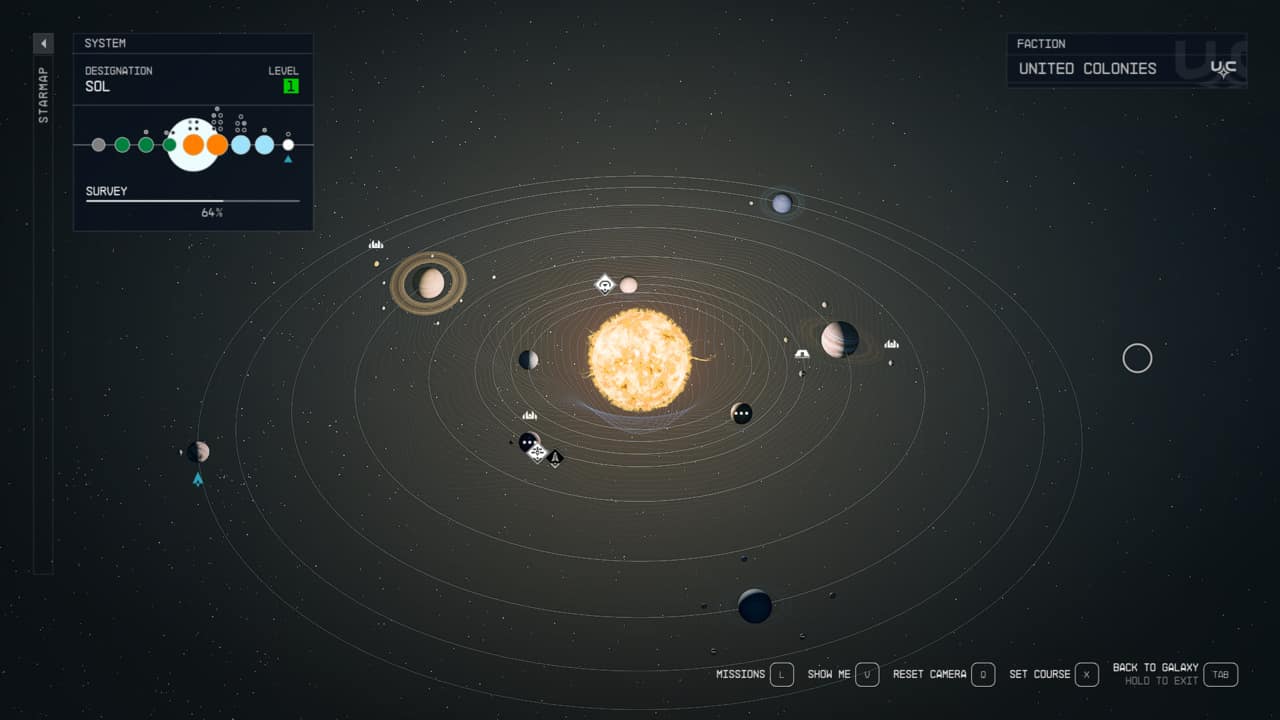
What is Sol in Starfield?
Sol is the name given to our real-life solar system in Starfield. Located in what has become known as the Settled Systems, it features the same planets that we have in our own solar system, although a lot of things have changed there in the centuries before Starfield takes place in 2330.
Starfield Sol planets
Here are all the planets and moons in the Starfield Sol system
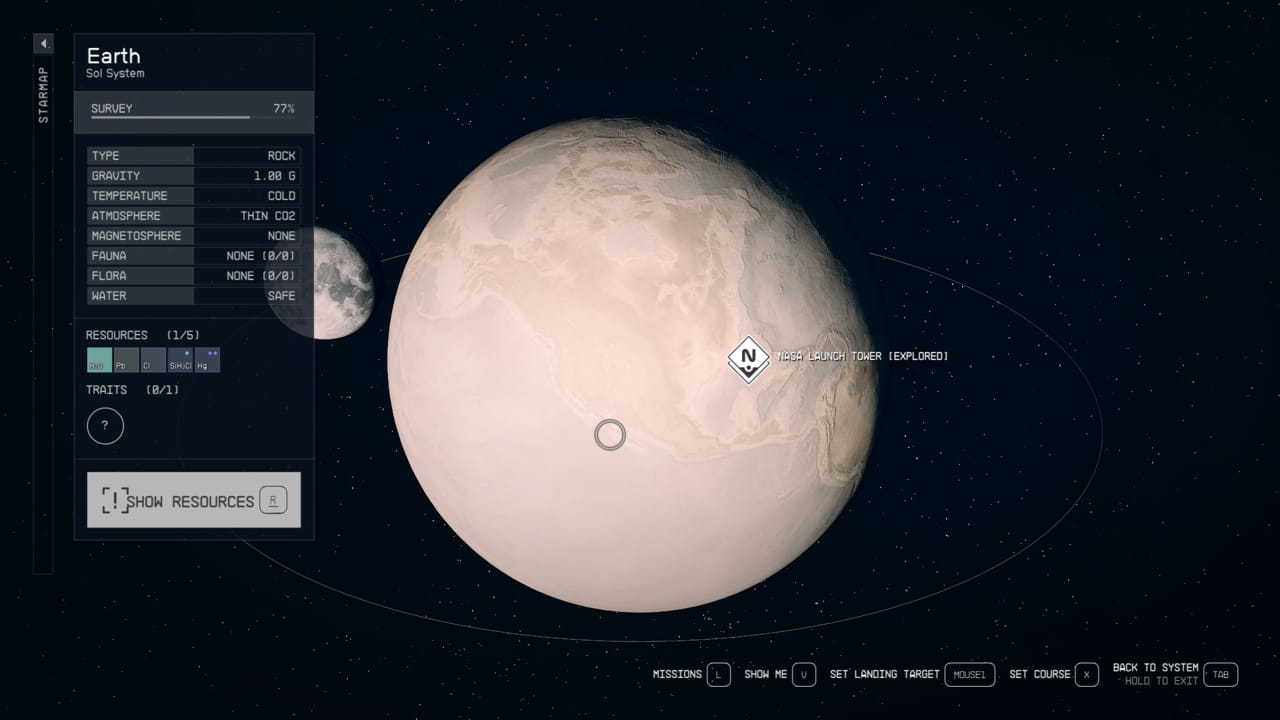
Earth
Earth is our home world, though it’s changed quite significant in Starfield, rendered to an inhabitable, cold husk with no flora or fauna to speak of. Like our own planet, it has one moon, known in-game as Luna. You can land on Earth in Starfield to mine resources like H2O, lead, chlorine, chlorosilanes, and mercury
- Type – Rock
- Gravity – 1.00 G
- Temperature – Cold
- Atmosphere – Thin O2
- Magnetosphere – None
- Fauna – None
- Flora – None
- Water – Safe

Luna
Essentially a fancy name for Earth’s moon, Luna is our very own moon. Though much the same as we know it today, it features a major Nasa installation, the location of a major story beat in Starfield.
- Type – Barren
- Gravity – 0.17 G
- Temperature – Temperate
- Atmosphere – None
- Magnetosphere – None
- Fauna – None
- Flora – None
- Water – None
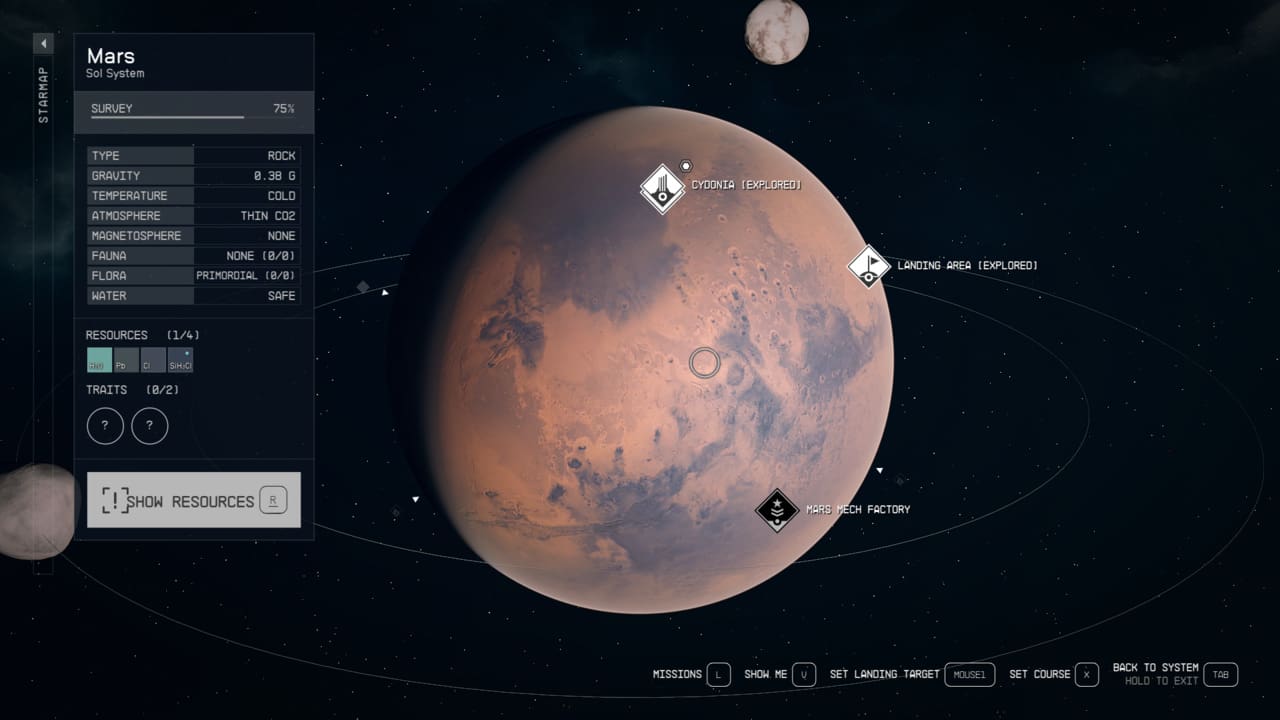
Mars
The famous Red Planet, Mars is the fourth closest planet to the sun in the Starfield Sol system and has two moons – Phobos and Deimos. Home to a vast array of industrial and mining operations, Mars is a resource-rich planet, and a source of materials for the Starfield United Colonies faction, who have jurisdiction over it. Mars is also home to the oldest surviving settlement beyond Earth, the city of Cydonia.
- Type – Rock
- Gravity – 0.38 G
- Temperature – Cold
- Atmosphere – Thin CO2
- Magnetosphere – None
- Fauna – None
- Flora – Primordial
- Water – Safe
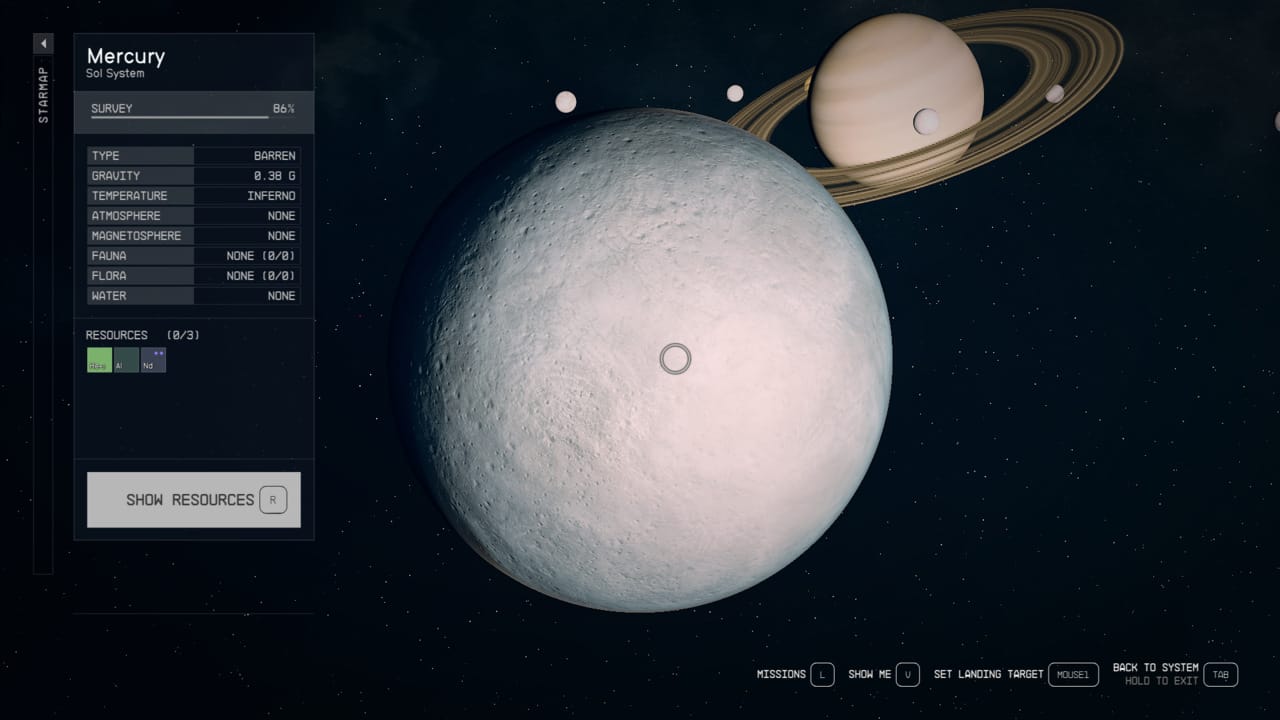
Mercury
Mercury is a planet in the Starfield Sol system and the closest to the sun. It has no moons. Though a scorching inferno, you can still land on Mercury to mine resources such as helium-3, aluminiun, and neodymium.
- Type – Barren
- Gravity – 0.38 G
- Temperature – Inferno
- Atmosphere – None
- Magnetosphere – None
- Fauna – None
- Flora – Primordial
- Water – None

Venus
Venus is a moon-less planet in the Sol system. Due to its proximity to sun, high-temperatures are prevalent on the planet, but it still has H2O, lead, nickel, cobalt, and dysprosium on its surface.
- Type – Rock
- Gravity – 0.90 G
- Temperature – Inferno
- Atmosphere – Extra CO2
- Magnetosphere – None
- Fauna – None
- Flora – None
- Water – None

Jupiter
Recognisable for it’s colourful layers, Jupiter is a gas giant in the Sol system that you can’t land on. It has four moons – Callisto, Io, Ganymede, Europa – all fairly rich in resources such as iron, helium-3, and chlorine
- Type – Gas Giant
- Gravity – 2.65 G
- Temperature – Frozen
- Atmosphere – H2
- Magnetosphere – Extreme
- Fauna – None
- Flora – None
- Water – None
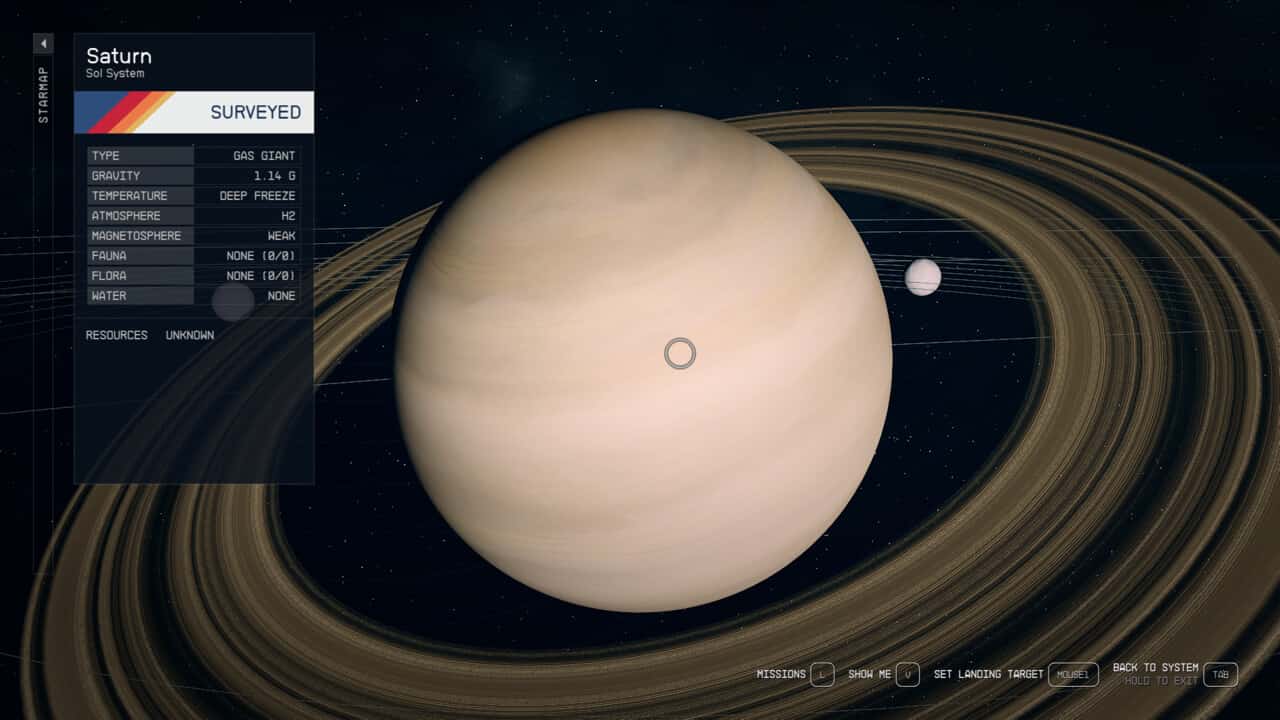
Saturn
Known for it’s stunning rings, Saturn is a planet in the Sol system with no less than seven moons – Rhea, Enceladus, Iapetus, Dione, Mimas, Titan, and Tethys. Titan is worth visiting if only because it’s home to New Homestead, a small settlement.
- Type – Gas Giant
- Gravity – 1.14 G
- Temperature – Deep Freeze
- Atmosphere – H2
- Magnetosphere – Weak
- Fauna – None
- Flora – None
- Water – None
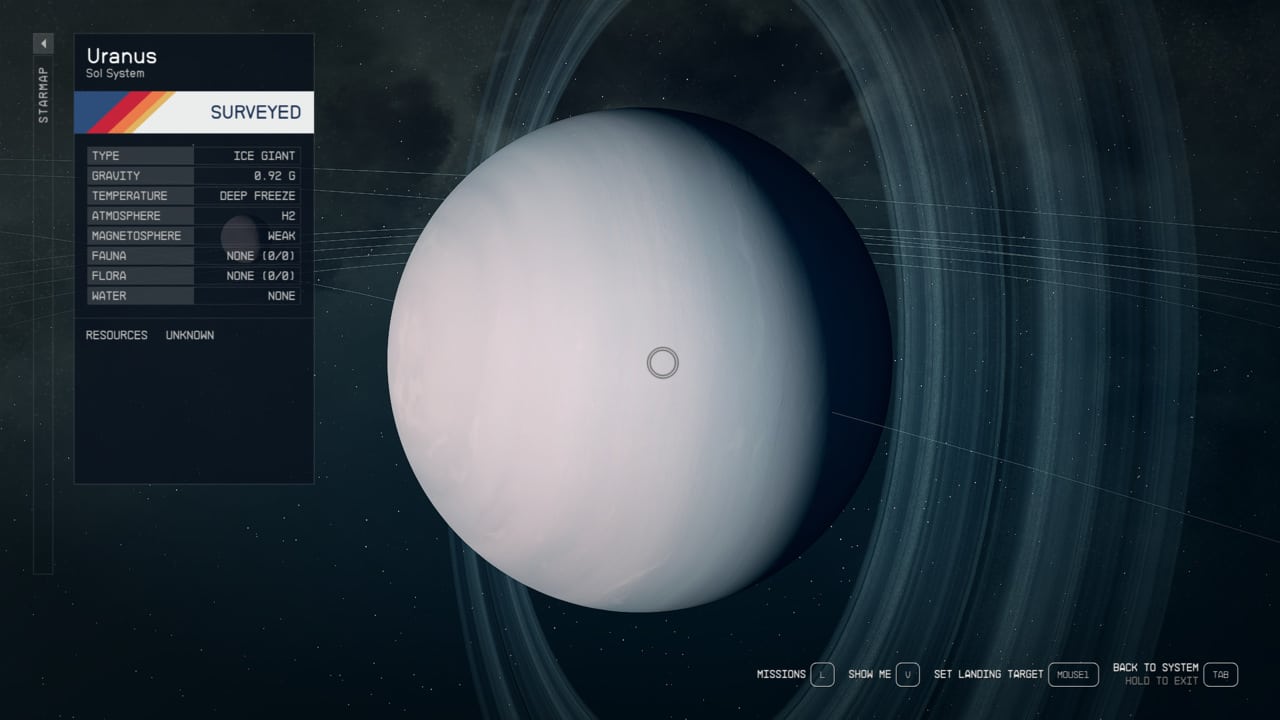
Uranus
Uranus is an ice giant in the Starfield Sol system. Due to this you won’t be able to land there. It has five moons – Umbriel, Oberon, Ariel, Titania, and Miranda.
- Type – Ice Giant
- Gravity – 0.92 G
- Temperature – Deep Freeze
- Atmosphere – H2
- Magnetosphere – Weak
- Fauna – None
- Flora – None
- Water – None

Neptune
Neptune is the second furthest planet from the sun in the Starfield Sol system. It’s an ice giant so no landing here unfortunately, but you can land on its one moon, Triton.
- Type – Ice Giant
- Gravity – 1.15 G
- Temperature – Deep Freeze
- Atmosphere – H2
- Magnetosphere – Weak
- Fauna – None
- Flora – None
- Water – None

Pluto
Pluto is the furthest planet (technically a dwarf planet) from the sun in the Sol system. Covered in ice, it can be visited to mine resources like H20, lead, tungsten, and titanium. It’s low gravity makes it an ideal place to test out your boost pack.
- Type – Ice
- Gravity – 0.06 G
- Temperature – Deep Freeze
- Atmosphere – H2
- Magnetosphere – Weak
- Fauna – None
- Flora – None
- Water – Safe
Be sure to keep up to date with some of the other crucial Starfield systems. Volii, Alpha Centauri, and Cheyenne systems are places you’ll want to visit. If you want a greater in-depth breakdown of planets, check out our guides to Gagarin and Jemison. For more early game pointers, check out all the Starfield ship manufacturers locations, how to store items on your ship, where to get the Bounty Hunter spacesuit, and the best Starfield spacesuits to grab as soon as you can.
How many planets are there in the Sol system?
There are eight planets in the Starfield Sol system (nine if you include Pluto).

